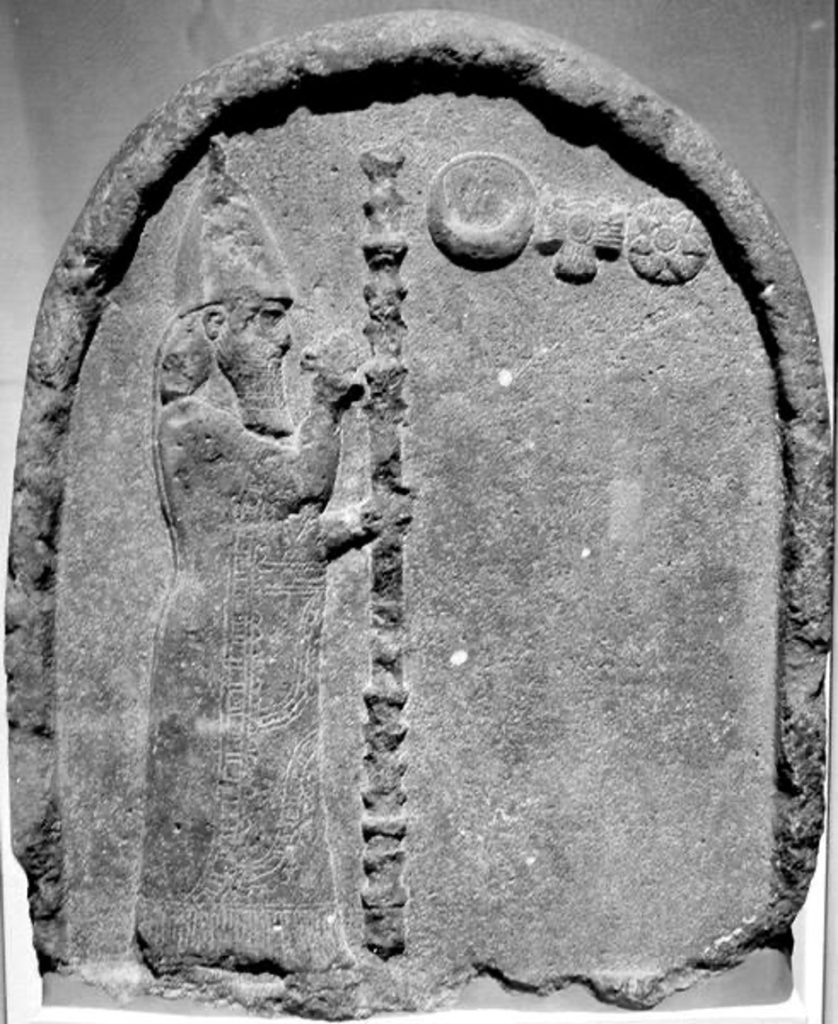Let’s dig a little deeper into the spirit or spirits at work on this mountain in Arabia. And, if you’ll indulge us, we’ll get a little speculative. As we’ve noted, there is only so much we can know for sure about the spirits opposed to God. They lie, and our perception into that realm is limited. But let’s look at what’s available to us and see if we can draw some tentative conclusions.
Most Bible scholars who trace the movement of the nations that dispersed from Babel in Genesis 10 place two nations that are mentioned in Ezekiel’s prophecy of the Gog-Magog war, Sheba and Dedan, in Arabia. Sheba was the father of the Sabeans, who founded a kingdom in southwest Arabia, modern-day Yemen.
Dedan settled along the coast of the Red Sea in western Arabia, in the area called the Hejaz. Dedan was an important oasis along the caravan route between Sheba and Babylon. Because of the brutal desert that covers the interior of Arabia, the route traveled north along the Red Sea coastline, and then through Edom, southeast of Judah. Dedan grew into an independent kingdom around the time of the prophets Ezekiel, Jeremiah, and Daniel, in the 7thand 6th centuries BC. The last king of Babylon, Nabonidus, spent most of his reign at the important Dedanite oasis of Tayma while entrusting Babylon to his son, Belshazzar—he of the mene, mene, tekel, upharsin incident.

Sheba and Dedan were sons of Raamah, a son of Cush, the son of Ham. This makes Sheba and Dedan nephews of Nimrod, who we believe was the Sumerian king Enmerkar, would-be builder of the abode of the gods, the tower of Babel at Eridu. (Sheba and Dedan are also mentioned in Genesis 25 as grandsons of Abraham and his concubine Keturah, through their son Jokshan. Geographically, though, it still places them among the tribes of Arabia.)
Nobody is sure why Nabonidus spent a decade living in the desert. It may have been to consolidate his control over the profitable spice and incense trade, but he was seeking prophecy and guidance from his preferred deity, the moon-god Sîn, who the king apparently tried to elevate to the top spot in the pantheon in Babylon. Needless to say, this wasn’t popular with the priesthood of Marduk which stood to lose prestige and power if he’d succeeded.
I accomplished the command of Sîn, king of the gods, lord of lords, dwelling in the heavens, who, in comparison of the gods in heaven, his name is surpassing: (also) of Šamaš [sun-god], who is his brightest (peer), of Nusku [fire-god], Ištar [Ishtar/Inanna, goddess of sex and war], Adda [Hadad, the storm-god Ba`al], Nergal [Resheph/Apollo, god of war and plague, and gatekeeper to the underworld], (those) who accomplish the command of Nannar [Sumerian name for Sîn] their surpasser.[1] (Text in brackets added.)
Note that Marduk is missing from that list of deities. Nabonidus probably made an enemy of the established Marduk priesthood in Babylon, possibly creating a religious fifth column that contributed to the ease with which Babylon fell to the Persians.
It’s believed that Nabonidus’ mother Addagoppe was a priestess of Sîn from Harran in northern Mesopotamia. Harran was an important cult center of the moon-god as far back as Abraham’s day, 1,400 years earlier. So Nabonidus may have been of old Aramean/Amorite stock, and for some reason—call it infernal revelation, if you will—he was compelled to revive the flagging cult of Sîn and transplant it to the Arabian desert.
The moon-god has a long history in that part of the world. Not only do we have the evidence of the cult centers of Ur, Harran, and Jericho that date back to the 3rd millennium BC, but in the Bible’s account of Gideon’s victory over the Midianites, another people who lived in northwestern Arabia, we’re told that his haul of gold included crescent ornaments from the Midianites’ camels, which presumably honored the moon-god. Symbols depicting a heavenly triad of Sîn, Šamaš, and Ishtar—moon, sun, and Venus—are common from the mid 2nd millennium BC at least through the time of Nabonidus, who is depicted on a number of surviving stelae venerating the three deities.
The star and crescent symbol prominent in the Islamic world today only came into use after the Ottomans took Constantinople in 1453. However, it’s not too much of a reach to suggest that the ancient cult of the moon-god in the Near East and Arabia was carried forward into the modern era by the descendants of the Amorites, Arameans, and their Arab neighbors to the south, especially with the boost given to the moon-god’s cult in Arabia by the king of Babylon during the last days of that empire.
Why is this of interest? While Sheba (Yemen) seems geographically irrelevant to end times prophecy, Dedan, as we showed earlier, bears the same name as the ancient Amorite tribe Didanu/Tidanu, from which the Greeks derived the name of the Titans. And the area settled by the Dedanites, the Hejaz, includes the two holiest sites of Islam, Mecca and Medina.
Muslim scholars would argue the connection, but the symbolic link, at least, is obvious. Joel Richardson does an excellent job of establishing the pagan roots of Allah in his book, Mystery Babylon, a topic Derek explored in depth in his 2017 book Bad Moon Rising. The historical link between Nabonidus, the moon-worshiping king of Babylon, and the region of Islam’s holiest sites may be coincidental, but you know how we feel about coincidence theories.
Now, please understand: We’re not suggesting a physical connection between the Watchers/Titans and the Arab tribes that spread Islam across the world. Nevertheless, it’s fascinating that history has once again provided a spiritual link between the past and the future where we never expected to find one.
[1] Harran inscription H2, A & B, Col. III , cited by C.J. Gadd, “The Harran Inscriptions of Nabonidus.” Extrait d’Anatolian Studies, VIII (1958), pp. 35- 92. In: Syria. Tome 37 fascicule 1-2, 1960, pp. 194-196.

